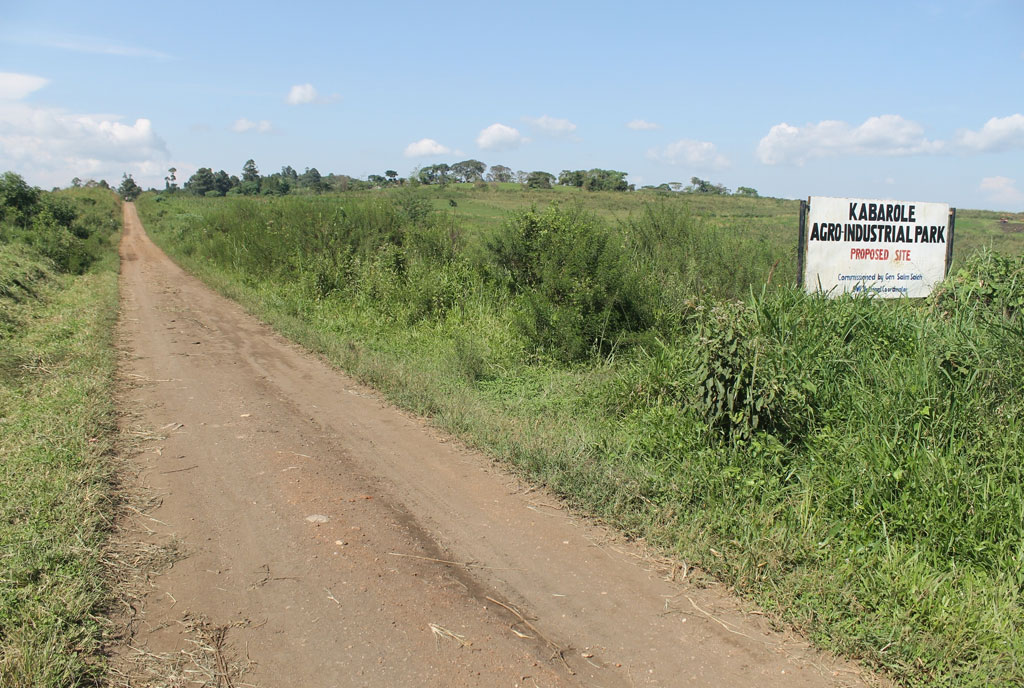Government to set up firm for new bridge workers - Museveni

Opened. President Museveni and Japan State Minister for Foreign Affairs Masahisa Sato commission the Source of the Nile Bridge in October last year. PHOTO BY DENIS EDEMA
What you need to know:
- Remuneration. The President urged Parliament to ensure that local technocrats who will manage such construction are paid highly.
Jinja. President Museveni has said government will set up a company that will absorb former workers of The Source of the Nile Bridge that was commissioned yesterday.
The idea was mooted while the President was commissioning the new bridge in Jinja District together with the Japanese State Foreign Affairs minister, Mr Masahisa Sato.
“I am happy to note that out of 760 staff, 90.5 per cent of contractors’ staff was local, out of 33 supervising staff, 67 per cent were local and 80 per cent of reinforcements used in the construction were locally sourced.
To boost such local content, there is a proposal I shared with the Chinese firm, Syno Hydro, who are constructing the Karuma dam,” Mr Museveni said.
“The idea is that when Karuma dam is completed, the equipment should not be discarded instead, the locals should form a joint venture with Syno Hydro together with the National Enterprise Corporation (NEC) and continue building the dams like the Chinese were doing,” he added. NEC is a state-owned corporation and the commercial arm of the Uganda People’s Defence Forces (UPDF) whose investments and activities include agriculture, manufacturing and healthcare, among others.
The President urged Parliament to ensure that local technocrats who are going to be managing such construction are paid highly.
Mr Sato, who together with Mr Museveni commissioned the new bridge said: “This project has been a success considering the fact that it has drawn many people.” “I last came to Uganda (Entebbe) in 2012 to witness Japanese peace-keeping mission and I am pleased that this ceremony has brought me back to Uganda, the Pearl of Africa,” Mr Sato said through an interpreter.
Mr Museveni, who arrived at The Source of the Nile Bridge at around 2.45pm, was accompanied by the First Lady Janet Museveni. He was received by Mr Sato, the Works and Transport Minister, Ms Monica Ntege Azuba, and the Investment State Minister, Ms Evelyn Anite, among other ministers, government officials, Members of Parliament and district leaders.
The new bridge has 202 Light-Emitting Diodes (LED) bulbs at the base of the cables that light up the 72 stay cables.
Lighting
A trial illumination was conducted on Monday night to the wonderment of residents and passerbys, and is billed to be a huge tourist attraction.
Officials say the iconic overpass will only be illuminated during national ceremonies through a computerised lighting system.
A new road has been constructed from the Nile Breweries plant round-about, linking to the bridge and onto a new one-kilometre surfaced stretch that connects back to the old highway at Igar fuel station junction.
I can now work anywhere, says new bridge carpenter
Mr Eria Batanaka is among the indigenous Ugandans who were contracted to work on the Source of the Nile Bridge, previously referred to as ‘the new Nile Bridge’.
The 37-year-old carpenter, who resides in Mafubira Village, Mafubira Sub-county in Jinja District, was eking out a living through his modest carpentry workshop before the bridge job beckoned. He considers himself ‘lucky’ to have been among the more than 500 local labourers who were initially taken on.
“This job has helped me hone my skills as a carpenter,” Mr Batanaka says.
Work schedule
Mr Batanaka says women were not employed. His day, like the rest of his colleagues, began at 7.30am with a parade where they were briefed about their expectations.
“We would then work until 12.30pm, go for lunch and resume the shift at 1.30pm which could go on until 6.30pm,” he says, adding that he worked for extra hours to earn overtime allowance without saying how much he eventually took home.
“With this experience, I can assure you that I can work on any project anywhere as long as I am hired as a carpenter,” Mr Batanaka concludes.
85-year-old recounts old bridge construction
When sourcing for Ugandans who participated in the construction of the old (Nalubaale) bridge in Jinja District, Mr Severino Gale’s name easily comes to mind.
Construction of the old bridge started in 1946 and ended in 1954 when it was opened by Queen Elizabeth II.
Throughout its six years of construction, Mr Gale, 85, was a permanent fixture at the site’s ‘Road Fixing Section’, from the ground-breaking stage to its completion.
When he heard that the new bridge would be commissioned yesterday, he travelled from Arua District to witness the milestone.
“We were basically working manually with no mistreatment although the work was hectic. We reported at the site by 8am, worked until noon and had lunch from 1pm to 2pm after which we returned to work until 4pm,” he recalls.
“We had Japanese, Italian and German supervisors on site and the bridge was built with one heart (sic),” Gale adds.
“What I remember is that some of the workers were Italian prisoners who knew that after the construction of the bridge, they were going to return home free men,” he says.
“There was no single woman on site. Even the food we ate was prepared by ourselves and comprised posho and boiled beans with salt,” he adds.
Mr Gale said he was paid a monthly wage of Shs46 although he cannot put a rough estimation to how much it comes to in today’s currency.
The 85-year-old, however, concedes that while they were building the old bridge, Uganda was not developed; but The Source of the Nile Bridge shows development and high technological advancement which was lacking then.
“There is hope in Uganda to do more things than this,” he says.




